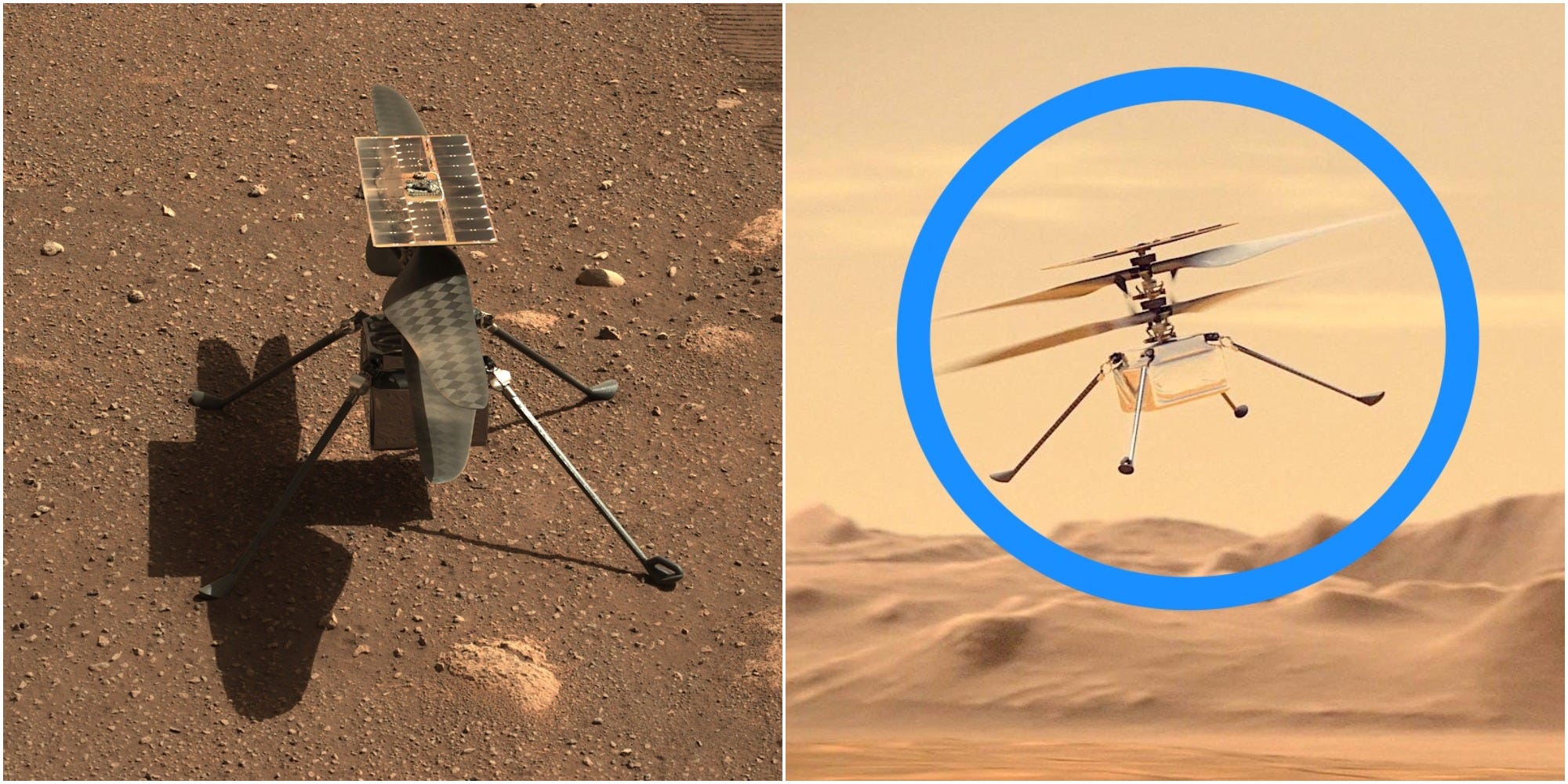
NASA/JPL-Caltech/ASU
- NASA's Ingenuity helicopter flew on Mars for the first time on Monday, making spaceflight history.
- Ingenuity's 10-foot hover was the first controlled, powered flight ever on another planet.
- Space helicopters could one day explore other planets or scout terrain for Mars astronauts.
- See more stories on Insider's business page.
NASA's Ingenuity space helicopter has lifted off from the Martian surface, flown, and landed safely, pioneering a technology that could revolutionize the way we explore other planets.
The 4-pound drone began to spin its four carbon-fiber blades early Monday. Spinning in opposite directions at 2,500 rotations per minute – about 5 times the speed of a helicopter on Earth – the blades gained enough traction in the thin Martian atmosphere to lift Ingenuity into the air.
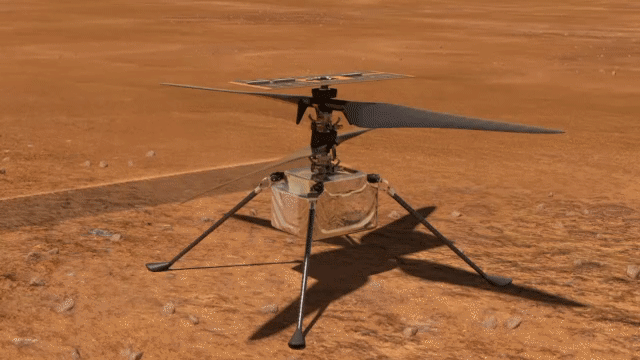
The drone climbed about 10 feet above the red-dust ground and hovered there for about 30 seconds. It was the first powered, controlled flight ever conducted on another planet.
Though 10 feet might not sound like much, hovering there is the equivalent of flying three times higher than the peak of Mount Everest, since Mars' atmosphere has 1% the density of Earth's.
Ingenuity's purpose on Mars was simply to show that rotorcraft technology can work in that kind of harsh environment. Its mission is now a success.
Two cameras on the bottom of Ingenuity should have recorded footage throughout the flight. The Perseverance rover - which carried Ingenuity to Mars - watched the liftoff from a nearby overlook, filming as well. So the video footage from both robots should be available over the next few days, according to NASA officials.
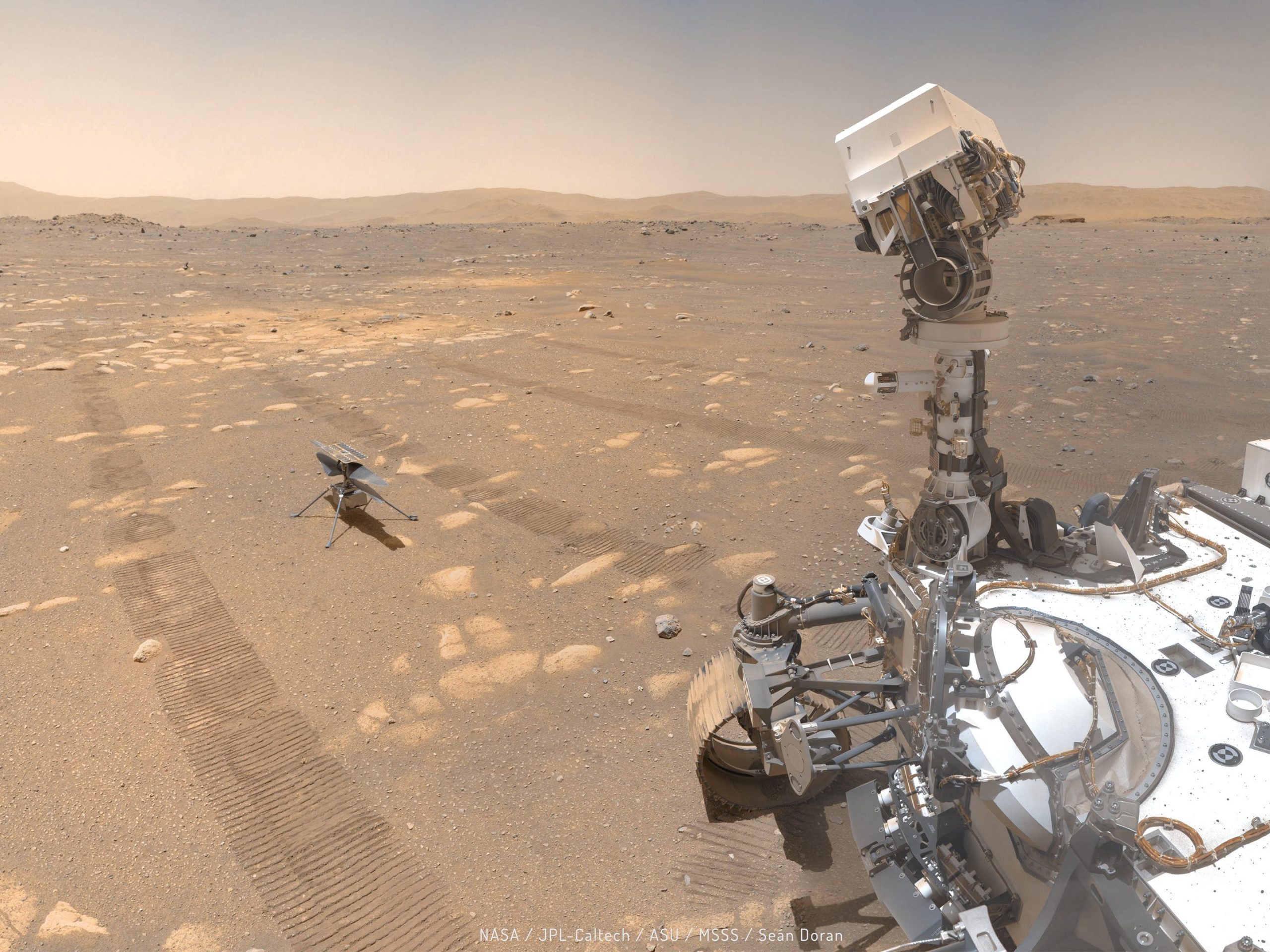
NASA/JPL-Caltech/MSSS/Seán Doran
Ingenuity had to fly autonomously, since it takes 8 minutes for signals to travel between Earth and Mars. So although it was the dead of night in Pasadena, California, a team of NASA engineers was wide awake, waiting to hear from the helicopter. They'd spent five years building the vehicle in preparation for this moment but couldn't do anything to control it in real time. In fact, they didn't hear from the helicopter until about three hours after it flew.
At 6:52 a.m. ET, mission controllers received a signal that Ingenuity had touched down in one piece. The room erupted in cheers and applause.
Before the flight, Thomas Zurbuchen, NASA's associate administrator for science, told Insider that beyond this particular helicopter, the flight has proven that NASA "can add an aerial dimension to discovery and exploration on Mars."
"That aerial dimension, of course, opens up aspects of science and overall exploration that, frankly, at this moment in time are only our dreams," he said.
NASA's space-drone dreams
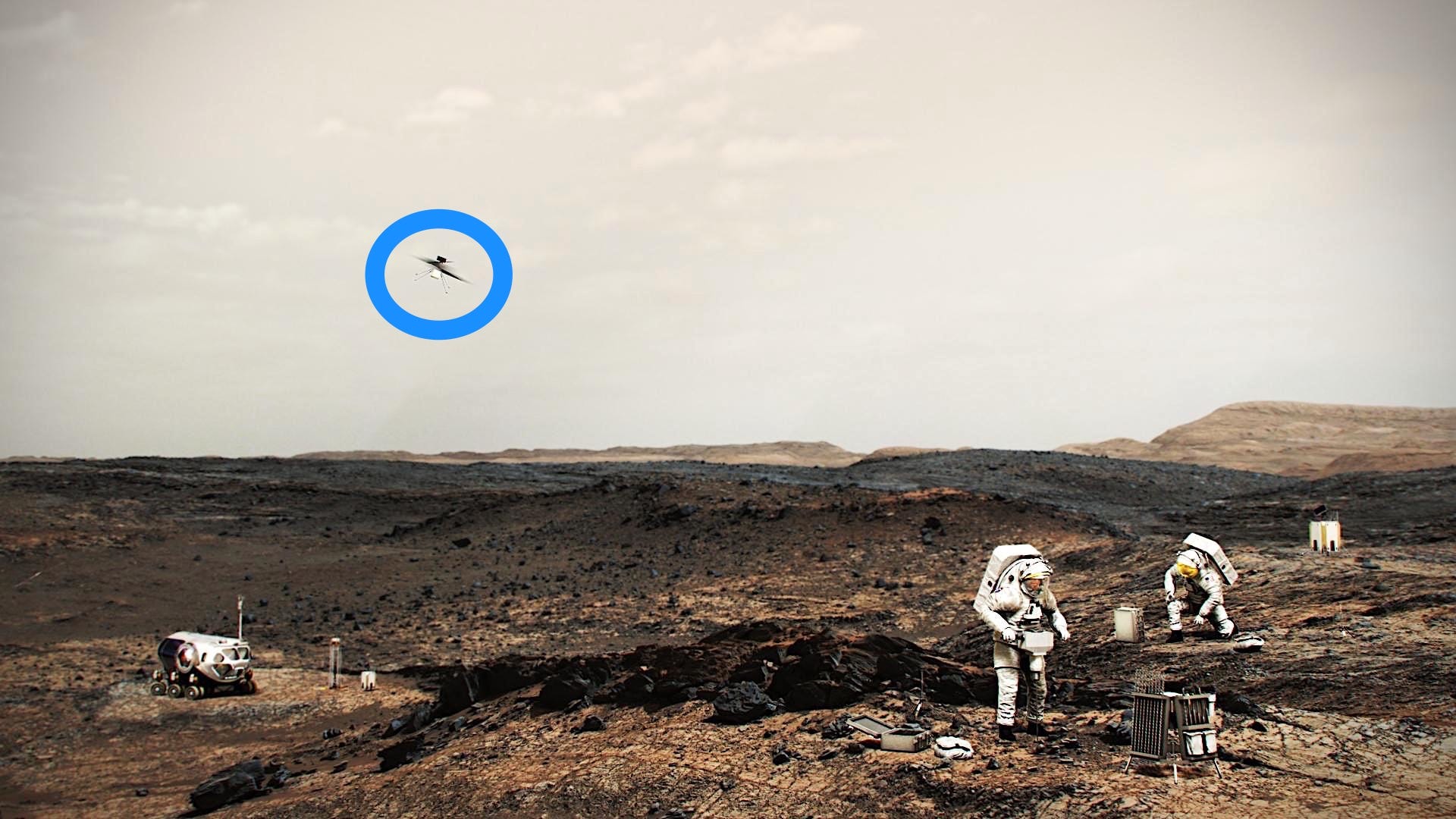
NASA
Space helicopters similar to Ingenuity could someday explore canyons and mountains, study large regions faster than a rover can, or even do reconnaissance for future astronauts.
These space drones could fly "over ravines, down canyons, up mountains," Josh Ravich, mechanical lead for the Ingenuity team at NASA's Jet Propulsion Laboratory, told Insider. "Even rocky terrain is fairly inaccessible to the rovers but much more easily accessed by a rotorcraft."
NASA already has a helicopter mission in development: A rotorcraft called Dragonfly is set to launch toward Saturn's moon Titan in 2027. It aims to investigate whether that methane-rich world could host alien life.
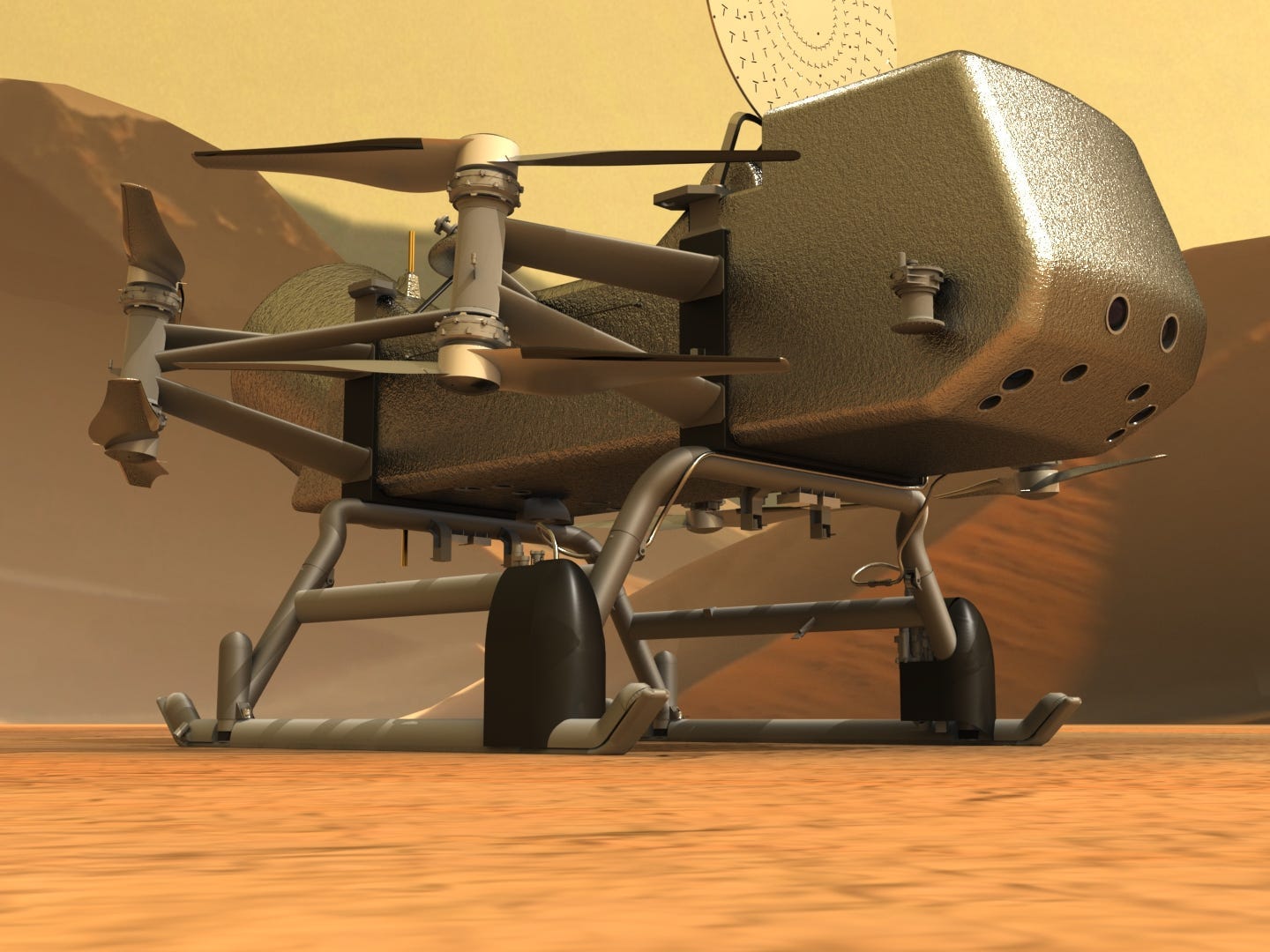
NASA/Johns Hopkins APL
But Dragonfly is still only the beginning of NASA's space-drone dreams.
"Instead of a large rover carrying a small helicopter, imagine maybe a large helicopter carrying a small rover in the future," Ravich said.
Zurbuchen said he could even imagine a "fleet" of flying robots assisting future Mars astronauts.
"I'm sure our community will look at any and all options to bring controlled flight to bear as a tool of research and exploration," Zurbuchen said. "I'm sure they'll think of aspects that I cannot think of right now."
The first of up to 5 high-risk, high-reward flights

NASA/JPL-Caltech/ASU
Since all of Ingenuity's flights are demonstrations of an experimental technology, NASA engineers are fully prepared for the next attempts to fail.
"We are aware that failure is more likely in this kind of scenario, and we're comfortable with it because of the upside potential that success has," Zurbuchen said.
But if all goes well, Ingenuity's fifth and final venture could take it up to 15 feet high and out over 980 feet of Martian ground.
By then, though, "it would be unlikely to land safely, because we'll start going into unsurveyed areas," MiMi Aung, the project manager for Ingenuity, said in a briefing.
"If we do have a bad landing, that will be the end of mission," she added. "The lifetime will be determined by how well it lands, pretty much."
In NASA's eyes, though, Ingenuity is already victorious, since Monday's feat provides unprecedented data about flight on Mars that will inform future rotorcraft projects. The worst-case scenario, Ravich said, would have been if Ingenuity didn't fly at all.
